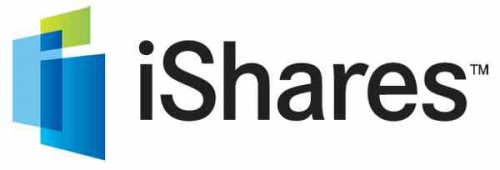14/05/2018
Flash boursier
Key data
| USD/CHF | EUR/CHF | SMI | EURO STOXX 50 | DAX 30 | CAC 40 | FTSE 100 | S&P 500 | NASDAQ | NIKKEI | MSCI Emerging MArkets | |
|---|---|---|---|---|---|---|---|---|---|---|---|
| Latest | 1.00 | 1.19 | 8'993.51 | 3'565.52 | 13'001.24 | 5'541.94 | 7'724.55 | 2'727.72 | 7'402.88 | 22'758.48 | 1'164.49 |
| Trend | |||||||||||
| %YTD | 2.62% | 2.10% | -4.14% | 1.76% | 0.65% | 4.32% | 0.48% | 2.02% | 7.24% | -0.03% | 0.52% |
Highlights :
1. Temporary rise in the dollar
2. Inflation slowing in Europe but quickening in the US
Firmer dollar unlikely to last
The consensus surrounding the dollar in early 2018 was clear in the eyes of most experts, namely that it would continue to depreciate during the year – as it had in January and February. The odds seemed firmly stacked against the greenback as the US faced growing “twin” fiscal and current-account deficits plus risks to foreign trade owing to the erratic actions of its president.
After the anticipated decline (to a low of CHF 92.20 on 15 February 2018), analysts’ forecasts must be reconsidered. The dollar is now trading 8% higher against the Swiss franc. At first glance, there has been no specific trigger for this strong and steady recovery in the US dollar. Simply what is happening is that good news is massing around the dollar, which had been technically oversold. In particular, some hedge funds has taken advantage of the oversold situation to increase tactical positions. Investors with a longer-term horizon have not participated in this buying wave.
The euro has also staged a significant correction against the dollar. Europe’s economic recovery has lost considerable momentum in recent months. This applies not only to laggards among euro area countries, but also to the former powerhouse: German industry. Inflation has been slowing in Euroland but picking up pace in the US. That has resulted in the prospect of the ECB keeping monetary policy looser for longer, which will dampen the euro, with the SNB following suit – as it has to march to the beat of the ECB’s drum. Moreover, political risks are resurfacing in Italy, which also works against the euro.
In fact, all these disruptive factors are most probably priced into current exchange rates. The greenback’s rise is temporary, merely a correction. We do not believe that investors should prepare for a stronger dollar in the medium term and, hence, see the current uptrend aborting.
Thus far into his term of office, Donald Trump has edge away from international agreements and shown little interest in participating in new ones. However, the summit with North Korean leader Kim Jong-un, confirmed for 12 June in Singapore, is a positive development. It will give the president the opportunity to demonstrate that he can make the kind of agreements that have eluded previous US administrations for decades.
Sika (ISIN: CH0000587979, price: CHF 8,130)

The Sika saga has come to an end after a compromise deal was finally achieved between the Burkard family, the French group Saint-Gobain and Sika’s management. In 2014, Saint-Gobain tried to take control of Sika by acquiring 16% of the capital belonging to the family, which automatically gave it 52% of the voting rights. This triggered a legal tug of war that lasted three years, culminating in the agreement reached last week.
Under the terms of the agreement, Saint-Gobain will acquire the Burkard family’s stake at a higher price than initially planned (as the share price has doubled since the beginning of the conflict), part of which will revert directly to Sika (around 6% of the capital). Saint-Gobain will in the end hold approximately 10% of the capital and will not have a seat on the Board of Directors.
The news sent the share surging as doubts surrounding both the company’s future ownership and its ordinary business have been dispelled. The share price has recovered to flirt with the highest levels reached in January 2018 as the news was well received by investors. At the same time, management reiterated its sales growth targets of around 7% per year. So the news is good but much has already been priced in.
Sika is a solid company but, at current levels, the share looks pricey.
iShares PHLX Semiconductor ETF (ISIN: US 4642875235, price: USD 183.20)

Semiconductors have more and more applications beyond traditional computing. We are witnessing a transition from hardware to software, which is a highly profitable and a less cyclical business. M&A activity is also driving concentration in the industry.
According to forecasts, the sector should continue to experience brisk growth, in the range of 9-12% for 2018, with increased demand from key electronics markets (PCs and tablets, smartphones, cars). The growth trend for memory and logic circuits is likely to climb fast in the US particularly.
Overall, semiconductor companies (such as Intel, AMD and Nvidia) reported better-than-expected results in the first quarter and also raised their guidance figures. Profit margins are up. However, the performance of individual securities can be very volatile, with prices shifting markedly over short periods. For those wanting exposure to the sector, we recommend the iShares Semiconductor ETF, which insulates against price swings.
Buy. Target: USD 210.
Download the Flash boursier (pdf)


 Flash boursier
Flash boursier